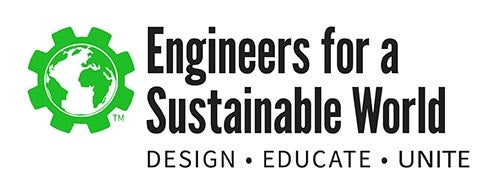
Eligibility:
Open to any URI student.
Mission:
URI Engineers for a Sustainable World is dedicated to fostering a community of students committed to sustainability and environmental problem-solving. Through hands-on projects and interdisciplinary collaboration, we strive to develop innovative solutions that address campus environmental challenges. Our mission is to empower students with the knowledge, skills, and experience needed to contribute to a more sustainable future while maintaining a fun, creative, and engaging problem-solving environment.
Vision:
We envision a stress-free, collaborative, and open-minded space where students can learn, grow, and apply their expertise toward real-world sustainability challenges. By encouraging equality in decision-making and inquisitive discussions, we aim to cultivate an inclusive atmosphere where diverse perspectives drive meaningful innovation. Our goal is to prepare students to become leaders in sustainability, equipped with practical experience that will support their future careers.
Core Values:
At the core of URI Engineers for a Sustainable World are the values of collaboration, inclusivity, and hands-on learning. We believe in fostering a supportive community where members build on one another’s strengths, share knowledge, and work together to achieve tangible sustainability goals. We are committed to ensuring that our work remains engaging, creative, and impactful while providing opportunities for professional and personal growth. Through these values, we strive to make a lasting difference in our community and beyond.
Goals:
- URI Engineers for a Sustainable World seeks to actively engage students in sustainability initiatives by providing hands-on engineering experiences that address environmental, social, and economic challenges.
- Our goals include fostering a collaborative and inclusive community, enhancing campus sustainability through interdisciplinary teamwork, and ensuring that every member gains valuable skills applicable to their future careers.
- We strive to create opportunities for students to work on meaningful projects, enhance their problem-solving abilities, and contribute to a more sustainable world while maintaining a fun and creative environment.
Membership:
Can join any time during the academic year.
Why Become a Member:
Joining Engineers for a Sustainable World provides hands-on experience in sustainability-focused projects while fostering a collaborative and inclusive community. Members develop problem-solving skills, apply their knowledge to real-world challenges, and gain valuable experience for future careers. By becoming a member, students can expand their skills, connect with a driven community, and make a real impact through innovative and engaging projects.
Meetings:
- ESW Meets Mondays at 6:30PM in FCAE 040
- ESW is a part of URI’s Sustainability Club Coalition, working in tandem with other sustainability clubs to realize our joint mission.
Affiliations/Chapters:
Chapter of National Organization – Engineers for a Sustainable World
Professional Development/Leadership Opportunities:
- URI Engineers for a Sustainable World offers a range of executive board positions, including project leads who manage small teams on dedicated sustainability projects.
- Executive board members are also eligible to attend the regional ESW conference each spring, providing networking opportunities, workshops, and industry insights to support their professional growth.
Events:
- Sustainability Summit
- Each year ESW hosts our annual Sustainability Summit. The event focuses on a different topic each year, with speakers from across the state from a diverse set of professional backgrounds. The event aims to be URI’s largest sustainability event of the year, bringing together students, faculty, and the local community to support local awareness and change.
- Other Events – ESW also hosts a variety of different events for its members, including craft nights, beach cleanups, and waste collection events.
Advisor:
Dr. Che-Wei Chang
Assistant Professor
College of Engineering: Ocean Engineering
Contact Information:
E-Mail: eswuri@etal.uri.edu
Social Media:
Instagram: https://www.instagram.com/uri.esw/
LinkedIn: https://www.linkedin.com/in/engineers-for-a-sustainable-world-573082273/
Website: https://eswuri.wixsite.com/eswuri
